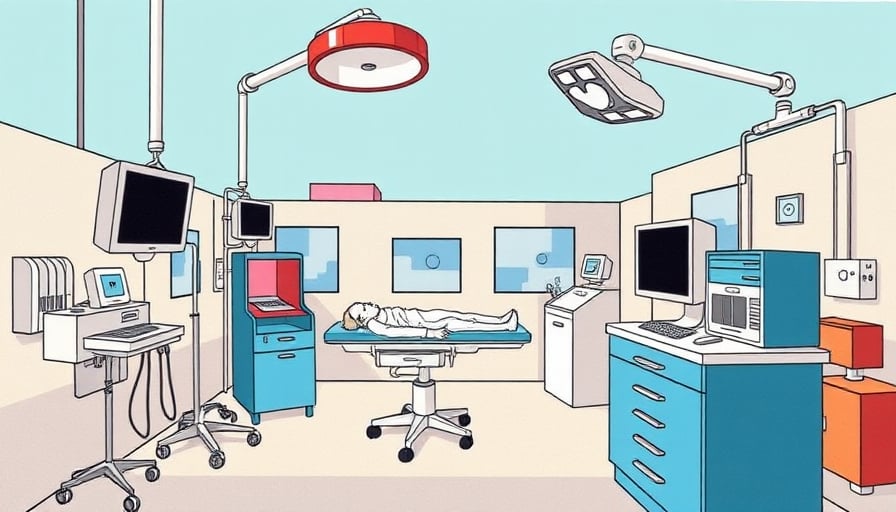Johnson & Johnson’s $3 billion Acquisition of Halda Therapeutics: Strategic Implications for the Oncology Landscape
Johnson & Johnson (NYSE: JNJ) announced today its intent to acquire the privately‑held biotechnology firm Halda Therapeutics for approximately three billion dollars in cash. Halda’s proprietary platform focuses on oral, targeted therapies for solid tumours, with a particular emphasis on prostate cancer. The transaction is projected to close in the next few quarters, pending regulatory review and customary closing conditions.
Market Dynamics
The global oncology drug market is projected to reach $200 billion by 2030, driven largely by rising prevalence of solid tumours and an expanding therapeutic pipeline. Oral targeted agents, which combine ease of administration with potent efficacy, now command over 35 % of new oncology drug approvals. By adding Halda’s candidates to its portfolio, J&J positions itself to capture a larger share of this high‑growth segment, potentially boosting its oncology revenues by 5–7 % over the next five years.
The acquisition also aligns with industry trends toward “precision medicine” and combination regimens. Halda’s platform, which leverages next‑generation sequencing to identify actionable mutations, offers J&J a scalable entry point into personalized oncology, a space where competitors such as Pfizer and Bristol‑Myers Squibb are already investing heavily.
Reimbursement Models
Reimbursement for oral oncology therapies has become increasingly complex. Payers now require value‑based contracts that tie payments to clinical outcomes. The average cost‑effectiveness threshold in the United States is around $150,000–$200,000 per quality‑adjusted life‑year (QALY) for high‑impact treatments.
By acquiring Halda, J&J gains early access to the development of value‑based pricing strategies, leveraging its existing experience with oncology drugs such as Xarelto and Libtayo. Early-stage negotiations with payers for Halda’s forthcoming agents can benefit from J&J’s established payer relationships, potentially reducing time‑to‑reimbursement and mitigating the risk of delayed market entry.
Operational Challenges
Clinical Development and Integration Halda’s pipeline consists of three Phase II/III candidates, each targeting distinct tumour types. Integrating these programs into J&J’s global development infrastructure will require coordination across regulatory, pharmacovigilance, and manufacturing units. Historically, the average time from acquisition to first‑in‑class launch in the biotech sector is 30–36 months; J&J’s track record in rapid integration suggests a potential reduction to 24–28 months if cross‑functional teams are mobilized swiftly.
Manufacturing and Supply Chain Oral formulations necessitate robust cold‑chain logistics, particularly for molecules with narrow therapeutic windows. J&J’s existing facilities in Wisconsin and Singapore can support scale‑up, but capital outlays of $500–$700 million may be needed to expand capacity and ensure redundancy against supply disruptions—a concern amplified by recent global manufacturing bottlenecks.
Regulatory Hurdles The U.S. Food & Drug Administration’s (FDA) “Accelerated Approval” pathway, which allows earlier market entry based on surrogate endpoints, could be leveraged for Halda’s prostate cancer candidate. However, subsequent “Confirmatory Trials” must be completed within a set timeframe, imposing additional operational risk.
Financial Metrics and Benchmarks
| Metric | J&J (post‑acquisition) | Industry Benchmark |
|---|---|---|
| Revenue Growth (oncology) | 5–7 % CAGR (next 5 yrs) | 3–4 % CAGR |
| R&D Spend (oncology) | 12 % of total R&D budget | 10 % |
| Cost per QALY | <$200k (target) | $200–$300k |
| Payback Period | 4–5 yrs | 5–6 yrs |
| Operating Margin | 18–20 % | 15–17 % |
These figures suggest that the acquisition is financially viable, provided that J&J successfully navigates the operational risks and secures favorable reimbursement agreements.
Balancing Cost, Quality, and Access
A key success factor will be aligning the high cost of innovative oncology therapies with patient‑centered outcomes. J&J’s established “patient access” programs—such as the Patient Assistance Program (PAP)—can be expanded to cover new Halda agents, mitigating affordability concerns for uninsured or under‑insured patients.
Simultaneously, maintaining rigorous clinical standards is essential. J&J’s investment in real‑world evidence (RWE) studies, which track long‑term efficacy and safety, will support value‑based contracts and demonstrate sustained quality outcomes to payers and regulators alike.
Outlook
Johnson & Johnson’s acquisition of Halda Therapeutics is a calculated move to deepen its foothold in the oncology arena. By leveraging its global infrastructure, payer relationships, and experience with value‑based reimbursement, J&J aims to accelerate the commercialization of oral targeted therapies. While the deal presents notable operational challenges—particularly in clinical integration and supply‑chain management—financial benchmarks indicate a promising return on investment, provided that the company manages cost structures and upholds high‑quality patient outcomes.
The completion of the transaction will likely reshape the competitive landscape, intensifying pressure on rivals to pursue similar strategic acquisitions and to refine their own reimbursement and operational strategies.




